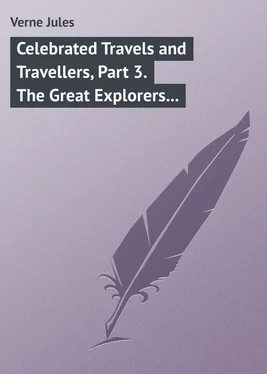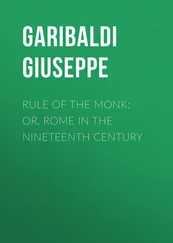Jules Verne - Celebrated Travels and Travellers, Part 3. The Great Explorers of the Nineteenth Century
Здесь есть возможность читать онлайн «Jules Verne - Celebrated Travels and Travellers, Part 3. The Great Explorers of the Nineteenth Century» — ознакомительный отрывок электронной книги совершенно бесплатно, а после прочтения отрывка купить полную версию. В некоторых случаях можно слушать аудио, скачать через торрент в формате fb2 и присутствует краткое содержание. Жанр: foreign_language, foreign_prose, на английском языке. Описание произведения, (предисловие) а так же отзывы посетителей доступны на портале библиотеки ЛибКат.
- Название:Celebrated Travels and Travellers, Part 3. The Great Explorers of the Nineteenth Century
- Автор:
- Жанр:
- Год:неизвестен
- ISBN:нет данных
- Рейтинг книги:5 / 5. Голосов: 1
-
Избранное:Добавить в избранное
- Отзывы:
-
Ваша оценка:
- 100
- 1
- 2
- 3
- 4
- 5
Celebrated Travels and Travellers, Part 3. The Great Explorers of the Nineteenth Century: краткое содержание, описание и аннотация
Предлагаем к чтению аннотацию, описание, краткое содержание или предисловие (зависит от того, что написал сам автор книги «Celebrated Travels and Travellers, Part 3. The Great Explorers of the Nineteenth Century»). Если вы не нашли необходимую информацию о книге — напишите в комментариях, мы постараемся отыскать её.
Celebrated Travels and Travellers, Part 3. The Great Explorers of the Nineteenth Century — читать онлайн ознакомительный отрывок
Ниже представлен текст книги, разбитый по страницам. Система сохранения места последней прочитанной страницы, позволяет с удобством читать онлайн бесплатно книгу «Celebrated Travels and Travellers, Part 3. The Great Explorers of the Nineteenth Century», без необходимости каждый раз заново искать на чём Вы остановились. Поставьте закладку, и сможете в любой момент перейти на страницу, на которой закончили чтение.
Интервал:
Закладка:
The whole country groaned under the yoke of the Kashefs, who were descendants of the commander of the Bosniacs, and paid only a small annual tribute to Egypt, which, however, was sufficient to serve as a pretext for oppressing the unfortunate fellaheen. Burckhardt cites a curious example of the insolence with which the Kashefs behaved.
"Hassan Kashef," he says, was in need of barley for his horses. Accompanied by his slaves, he walked into the fields, and there met the owner of a fine plot of barley. "How badly you cultivate your land," said he. "Here you plant barley in a field where you might have reaped an excellent crop of water-melons of double the value. See, here are some melon-seeds (offering a handful to the peasant proprietor); sow your field with these; and you, slaves, tear up this bad barley and bring it to me."
In March, 1814, after a short rest, Burckhardt undertook a fresh exploration, not this time of the banks of the Nile, but of the Nubian desert. Justly conceiving poverty to be his surest safe guard, he dismissed his servant, sold his camel, and contenting himself with one ass, joined a caravan of poor traders. The caravan started from Daraou, a village inhabited partly by fellahs and partly by Ababdéh Arabs. The traveller had good reason to complain of the former, not because they recognized him as a European, but because they imagined him to be a Syrian Turk, come to share the commerce in slaves of which they had the monopoly.
It would be useless to enumerate the names of the bridges, hills, and valleys in this desert. We will rather summarize the traveller's report of the physical aspect of the country.
Bruce, who had explored it, paints it in too gloomy colours, and exaggerates the difficulties of the route. If Burckhardt is to be credited, the country is less barren than that between Aleppo and Bagdad, or Damascus and Medina. The Nubian desert is not merely a plain of sand, where nothing interrupts the dreary monotony. It is interspersed with rocks, some not less than 300 feet in height, and shaded by thickets of acacias or date-trees. The shelter of these trees is, however, unavailing against the vertical rays of the sun, which explains an Arabic proverb, "Rely upon the favour of the great and the shade of an acacia."
At Ankheyre, or Wady-Berber, the caravan reached the Nile, after passing Shigre, one of the best mountain springs. One danger only is to be feared in crossing the desert; that of finding the wells at Nedjeym dry; and, unless the traveller should lose his way, which, however, with trustworthy guides, is little likely to happen, no serious obstacle arises.
It would appear, therefore, that the sufferings experienced by Bruce must have been greatly exaggerated, although the narrative of the Scotch traveller is generally trustworthy. The natives of the province of Berber appear to be identical with the Barbarins of Bruce, the Barabas mentioned by D'Anville, and the Barauras spoken of by Poncet. They are a well-made race, and different in feature from the negroes. They maintain their purity of descent by marrying only with the women of their own or of kindred tribes. Curious as is the picture Burckhardt draws of the character and manners of this tribe, it is not at all edifying. It would be difficult to convey an idea of the corruption and degradation of the Berbers. The little town of Wady-Berber, a commercial centre, the rendezvous for caravans, and a depôt for slaves, is a regular resort of banditti.
Burckhardt, who had trusted to the protection of the merchants of Daraou, found that he had made a great mistake in so doing. They sought every means of plundering him, chased him out of their company, and forced him to seek refuge with the guides and donkey-drivers, who cordially welcomed him.
Upon the 10th of April a fine was levied upon the caravan by the Mek of Damer, which lies a little south of the tributary Mogren (called Mareb by Bruce). This is a well-kept and cleanly Fakir village, which contrasts agreeably with the ruins and filth of Berber. The Fakirs give themselves up to the practices of sorcery, magic, and charlatanism. One of them, it is said, could even make a lamb bleat in the stomach of the man who had stolen and eaten it! These ignorant people have entire faith in such fables, and it must be reluctantly admitted that the fact contributes not a little to the peace of the town and the prosperity of the country.
From Damer, Burckhardt proceeded to Shendy, where he passed a month, during which time no one suspected him to be an infidel. Shendy had grown in importance since Bruce's visit, and now consisted of about a thousand houses. Considerable trade was carried on – grass, slaves, and cattle taking the place of specie. The principal marketable commodities were gum, ivory, gold, and ostrich feathers.
According to Burckhardt, the number of slaves sold yearly at Shendy amounts to 5000; 2500 of these are for Arabia, 400 for Egypt, 1000 for Dongola and the districts of the Red Sea.
The traveller employed his time during his stay at Sennaar in collecting information about that kingdom. Amongst other curious things, he was told that the king having one day invited the ambassador of Mehemet Ali to a cavalry review, which he considered rather formidable, the envoy in his turn begged the king to witness part of the Turkish artillery exercises. But at the outset of the performance – at the discharge of two small mounted guns – cavalry, infantry, spectators, courtiers, and the king himself, fled in terror.
Burckhardt sold his wares, and then, worn out by the persecutions of the Egyptian merchants who were his companions, he joined the caravan at Suakin, intending to traverse the unknown district between that town and Shendy. From Suakin he meant to set out for Mecca, hoping to find the Hadji useful to him in the realization of his projects.
"The Hadji," he says, "form one powerful body, and every member is protected, because if one is attacked the whole number take up arms." The caravan which Burckhardt now joined consisted of 150 merchants and 300 slaves. Two hundred camels were employed to convey heavy bales of "danmour," a stuff manufactured in Sennaar, and cargoes of tobacco.
The first object of interest to the travellers was the Atbara, a tributary of the Nile, whose banks, with their verdant trees, were grateful to the eye after the sandy desert. The course of the river was followed as far as the fertile district of Taka. During the journey the white skin of the pretended sheik Ibrahim (it will be remembered that this was the name assumed by Burckhardt) attracted much attention from the female population, who were little accustomed to the sight of Arabs.
"One day," relates the traveller, "a girl of the country, of whom I had been buying onions, offered to give me an extra quantity if I would remove my turban, and show her my head. I demanded eight more onions, which she immediately produced. As I removed my turban, and exposed my white and close-shaven head to view, she sprang back in horror and dismay. I asked her jokingly if she would not like a husband with a similar head, to which she replied with much energy, and many expressions of disgust, that she would prefer the ugliest slave ever brought from Darfur."
Just before Goz Radjeh was reached, Burckhardt's attention was attracted to a building, which he was told was either a church or temple, the same word having the two meanings. He at once proceeded in that direction, hoping to examine it, but his companions stopped him, saying, "It is surrounded by bands of robbers; you cannot go a hundred steps without danger of attack."
Burckhardt was unable to decide whether it was an Egyptian temple, or a monument of the empire of Axum.
At last the caravan entered the fertile district of Tak or El Gasch, a wide watered plain, whose soil is wonderfully fertile, but which for two months in the year is uninhabited. Grain is plentiful and is sold in Jeddah for twenty per cent. more than the best Egyptian millet.
Читать дальшеИнтервал:
Закладка:
Похожие книги на «Celebrated Travels and Travellers, Part 3. The Great Explorers of the Nineteenth Century»
Представляем Вашему вниманию похожие книги на «Celebrated Travels and Travellers, Part 3. The Great Explorers of the Nineteenth Century» списком для выбора. Мы отобрали схожую по названию и смыслу литературу в надежде предоставить читателям больше вариантов отыскать новые, интересные, ещё непрочитанные произведения.
Обсуждение, отзывы о книге «Celebrated Travels and Travellers, Part 3. The Great Explorers of the Nineteenth Century» и просто собственные мнения читателей. Оставьте ваши комментарии, напишите, что Вы думаете о произведении, его смысле или главных героях. Укажите что конкретно понравилось, а что нет, и почему Вы так считаете.












